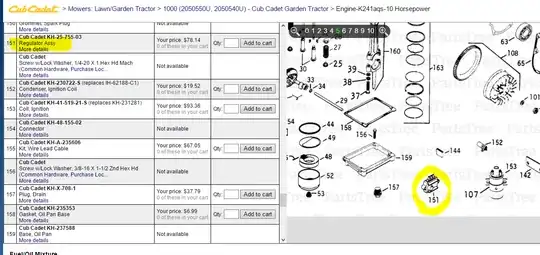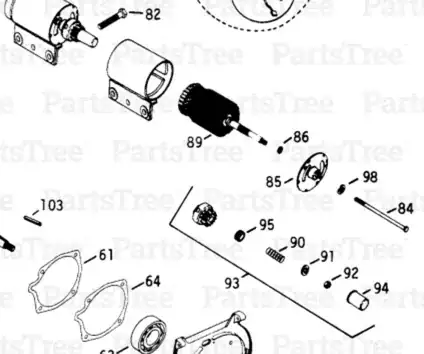On engines with compression release valves, the recommended method for testing compression is turning the engine in reverse direction. I'm working on a lawn tractor (with a Kholer K241AQS), so there aren't a lot of fancy electric systems. What complications would arise from simply plugging my battery in backwards? (Being DC, my starter should run in reverse direction.)
4 Answers
This engine is equipped with a voltage regulator. Depending on the exact construction of the regulator a reverse current would be disastrous, especially the high current from a starter battery 
- 8,644
- 3
- 27
- 41
Why not just put a wrench on the crankshaft? Ignoring the electrical repercussions, I fear damage to the starter, too. Besides, if the starter on this tractor uses a sprag clutch (and probably most other designs), it wont engage backwards, anyway.
- 1,742
- 1
- 10
- 13
Looks like the starter drive is the typical spring loaded drive gear that engages when the starter motor turns in the "forward" direction, then disengages if the engine starts running and overdrives the starter gear forcing it to disengage. So if you run the starter motor backwards, the starter gear won't engage at all, and the starter will just spin. And without being loaded down by the force needed to spin the engine, it may spin too fast and become damaged.
So, even if your electrical system could handle it (and it almost certainly can't), the starter won't run the engine backwards.
(image from partstree.com)
- 462
- 1
- 4
- 9
Even if there are no polarity-sensitive electronics to damage and the starter motor was able to engage, it is unlikely that the motor would rotate backwards anyway.
Most car starter motors (in fact all that I have worked with) do not use permanent magnets, instead opting for coils for the stator. I suspect the same may be true for your lawn tractor.
Therefore both the stator and rotors are using coils from the same feed and reversing the polarity of the feed reverses the direction of the magnetic fields on both the stator coils and rotor coil - the result being that the motor will rotate in the same direction as before anyway.
On a permanent magnet motor, you effectively just reverse one magnetic field (the rotor) when reversing polarity, and that it why they will rotate in the opposite direction.
- 51
- 1
